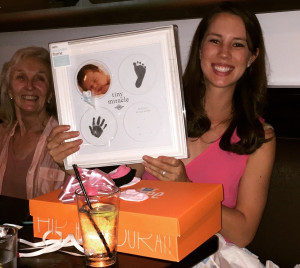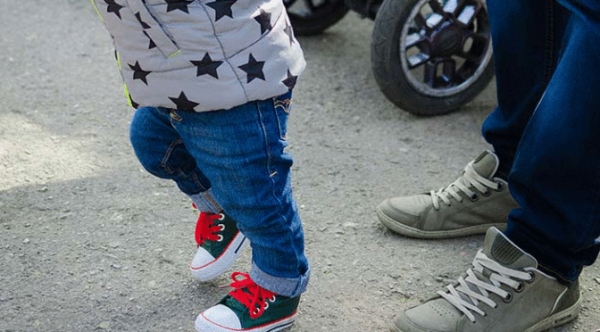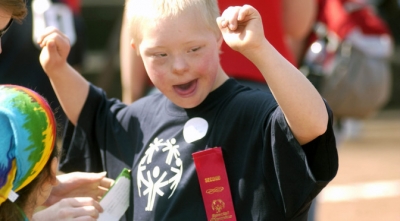Connect With Us
Blogs

Uncategorized (5)
Each year a quarter of all adults 65 and older fall. For some this will mean a serious injury that leads to disability or even death. For others, the injury isn’t so much physical as mental as they become fearful and depressed and unwilling to life the active lifestyle they once loved. In honor of Falls Prevention Day which occurs on September 22nd, we at Superior Foot & Ankle Center want to let patients know that they can decrease the risk of falling. Here’s how:
Build up strength and balance—regular exercise—walking being one of the best options—helps keep muscles and bones strong and keeps ligaments and tendons flexible. Feet that are functioning well are less likely to stumble. There are also several types of exercise, such as Tai Chi, that specifically focus on increasing balance. Look for one in your community.
Eat for strong bones—talk to your doctor about your bone density. It is now known that many people don’t fall and break a hip, but rather the hip breaks and they fall. Your doctor can tell you how much calcium you should have on a daily basis. Diets rich in dairy products, leafy greens (like spinach and kale) and certain fish (sardines, salmon, perch) will help you reach your daily calcium goal. Fortified juices and cereals as well as calcium supplements are also available.
Do a home inspection—take a walk through your home with a critical eye for fall hazards. Clear clutter from the floors, remove loose throw rugs and be sure stairs have railings on both sides. Bathrooms should have rails for showers and toilets if necessary and non skid treatments on the floor of the shower and tub. Be sure all areas of the home are well lit (inside and out).
Don’t procrastinate when it comes to healthcare—stay current with medical appointments. Regular eye exams will reduce the risk of falls due to poor vision. Keeping with your schedule of medical appointments will help ensure that your medications are appropriate for your weight and condition and that there are no interactions between prescribed drugs that can cause dizziness or blurred vision.
Of great importance is not putting off making an appointment with our podiatrists, Dr. Victoria Foley and Dr. Constance Omelas, at our Long Beach office if you are experiencing foot, toe or ankle pain, as well as monitoring existing podiatric conditions. Discomfort in the lower extremities can cause you to compensate and walk in unnatural ways that can lead to trips and falls. Contact us by calling: 562-420-9800.
Have you ever noticed that your child walks with their feet turned inward? Does this worry you? It is possible that your child has pigeon toe. But before you start stressing out with worry, here are some things that you need to know about pigeon toe and what might be causing the problem.
What is Pigeon Toe?
Pigeon toe (also known as in-toeing, false clubfoot, in-toe gait, metatarsus adductus, or metatarsus varus) is a condition that causes the toes to point inward. This condition is common in infants and young children. If your child is pigeon toed, it doesn’t mean that there’s something wrong with their feet, and it is not necessarily a problem. The term merely refers to the way the toes point when walking.
Pigeon toe isn’t painful of bothersome, nor is it known to cause other medical problems such as arthritis. Some of the symptoms of pigeon toe are:
- Feet pointed inward (as if the toes are touching)
- Stumbling (severe cases)
- Clumsiness
Causes of Pigeon Toe
Pigeon toe can have a few different causes that are normal variations in the way the legs and feet line up. The three conditions that can cause pigeon toe are: metatarsus adductus, tibial torsion, and femoral anteversion.
Metatarsus Adductus
This occurs when the foot tends to resemble a kidney, or when the metatarsus adductus has an inward curve at the outer edge of the foot.
If your child has this condition, you will probably notice it while they’re still a baby. Sometimes your doctor might try braces or special shoes while the child is still a baby (six to nine months old) to help the bones grow straight.
This condition will not clear up on its own. It requires treatment which will vary depending on whether the condition is flexible or fixed. Most flexible cases respond well to passive stretching, bracing, or specialized shoes, where as fixed types require serial plaster casting (casts on the feet and lower legs that are usually put on before the child is eight months of age).
If the treatment for flexible cases doesn’t work, then your child will be re-evaluated to make sure that they don’t have club-foot instead of metatarsus adductus. Surgical correction may be necessary, especially in cases of club-foot.
Tibial Torsion
This occurs when there is an inward twist of the tibia (shin) bone. This is commonly seen in children learning to walk (under two years of age).
Even with the twisted shin bone, the knees will still point straight ahead. This condition may be a result of the baby’s position in the mother’s womb before being born.
Usually the leg will straighten out within the first year of life as the baby starts pulling up and standing, but some children may continue to walk pigeon-toed until the leg bone is done growing. Surgery may be necessary for children who don’t outgrow this condition by the age of 10.
Femoral Anteversion
This occurs when there is an inward twist at the upper thighbone. The kneecap tends to point inward when the child is walking.
Most children show this form of pigeon toe between the ages of two and four, after they have begun walking. Children with a twisted thigh bone often sit with their legs crossed, and the best way to treat this condition is to have them sit in a chair with their legs uncrossed. This condition usually clears up by itself, but it may take one to three years for the thigh bone to straighten. Generally, a child will outgrow this condition by age eight.
Treating Pigeon Toe with Exercise
While pigeon toe usually corrects itself as the hip bones strengthen, there is a chance that, in some young children, the hip bones may remain weak or the shin bones of the lower legs might turn in. Treatments for this may include physiotherapy, with exercises such as:
- Have your toddler or young child sit up straight in a child-size firm chair. Help your child sit in the chair with their legs uncrossed and feet flat on the floor. Trace your child’s feet in the correct slightly outward position onto a piece of paper and have your child sit in the chair with their feet in the outlines. Continue this exercise daily until the condition is corrected.
- Teach your toddler or young child to walk backward. Clear an area of about six square feet in your living room or backyard to avoid injuries. Continue this exercise for up to 10 to 20 minutes or as long as your child is able to do so. This exercise will help strengthen your child’s hip joints. Repeat this exercise regularly during play and walking time.
- Make a low walking beam for your child to walk on. Place the board of wood on two square pieces of wood or two bricks. Keep the plank three to five inches off the ground to avoid injury due to falling. Help your child walk across the plank two to four times a day and continue this exercise regularly until their walking is normal. This exercise helps the child place one foot in front of the other correctly, and strengthens the muscles that keep the hip and shin bones aligned.
Book a Consultation
Before you try to diagnosis your child’s pigeon toe on your own, you should make an appointment with a qualified podiatrist. Book a consultation with Dr. Vikki and Dr. Connie today so that they can help you figure out the right treatment plan for your child’s pigeon toe.
Inclusivity and community are at the heart of the Special Olympics. Keeping in line with that spirit is why so many people can become involved in the organization, in several ways. Here at Superior Foot & Ankle Care Center, our participation has mainly been related to the health side of things. It could be said that, when these games are “afoot,” we help to keep foot health a priority. We do this by performing screenings that make sure participants are wearing proper shoes before they compete, and by offering our expertise and advice concerning foot-related problems. But for those of you who aren’t involved in health services, there are many other opportunities in which you can participate. Check out these ways you, or someone you know, can join in the fun and get involved in the movement:
Be a Coach/Official:
Whether it comes to motivating and teaching, or ensuring that the rules are implemented, coaches and officials are both integral parts of the Special Olympics. As the games and the number of its participants continue to grow, this is one area that could use more people to lend a helping hand.
Volunteer:
All over the world, Special Olympics offices need volunteers to help make them be the best that they can be. This can include things like meeting with the athletes and training them in various sports, or talents, such as photography, to capture the essence of the events and the heart of the competitors. Event organizers and fundraisers are also needed.
Participate:
Unified partners are those who play sports alongside athletes with intellectual disabilities. Like others involved, these participants get to experience the joy of the human spirit, when everyone works together. Help break down stereotypes and build up unity by joining the team!
Become an Athlete:
Children, ages 8 and up, with an intellectual disability are encouraged to become involved as an athlete and join in theses exciting events. For children, ages 2-7, the Youth Athletes program is available. At any skill level, athletes can become enriched by new friends and new challenges. Many have gained confidence and leadership skills that have led them to roles in coaching, mentoring, and public speaking.
Helping Acceptance Go Strong & Helping Feet Get Happy
Taking part in an organization like the Special Olympics can be a very rewarding experience, for all involved. It can work to create a better world where acceptance, friendship, and community can thrive. Learn how you can be a part of this process today.
Foot issues can have a big impact on everything from participating in sports, to volunteering, to the overall quality of life. If you are suffering from any of these problems, please contact our Long Beach office for help that can get your feet back on a happy, healthy track.
A Big Congratulation to Dr. Connie!
We couldn’t be more thrilled to share in the joy of Dr. Connie’s upcoming bundle of joy. We have been blessed to have her here with us at Superior Foot & Ankle Care Center. Her expertise in podiatric surgery has been invaluable, and her wonderful personality has always been a great source of joy for our patients, as well as our staff.
Dr. Connie Enjoying a Great Time at the Baby Shower

Recently, we were able to say thank you and to celebrate the arrival of her upcoming baby with a wonderful baby shower. Friends, colleagues and extended “family” (here’s Dr. Vikki’s mom with Dr. Connie at the shower) came together to celebrate this time of joy in Dr. Connie’s life.
She’s having a…
And for all of you wondering if she’s having a boy or a girl; well, we’ll let the last picture be the answer to that.





